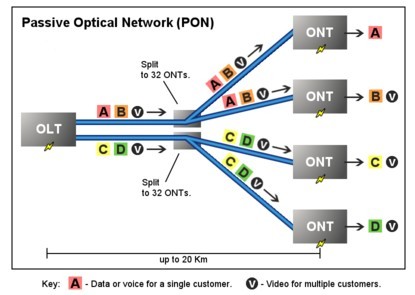Introduction of FBG Filter Embedded Adaptor-FBG filters for live network monitoring using in FTTH


FBG filters for FTTx applications are reflective filters integrated in the LC or SC adapters, which reflect the 1625 nm wavelength and transmit all other (i.e. 1310, 1490 and 1550 nm). They can be used to monitor live network utilizing OTDR operating at 1625 or 1650 nm. End-to-end OTDR measurements from OLT to ONT are typically difficult due to the high point insertion loss introduced by the splitter and due to the required very good spatial resolution. The use of the 1625 nm reflectors is an efficient and cost-effective way of reducing the required dynamic range of the OTDR. The 1625 reflectors are currently considered the best way of implementing real time end-to-end (OLT to ONT) monitoring of the optical layer in live FTTx networks.

More information for the FBG Filter Embedded Connector
DK Photonics – www.dkphotonics.com specializes in designing and manufacturing of high quality optical passive components mainly for telecommunication, fiber sensor and fiber laser applications,such as PLC Splitter, WDM, FWDM, CWDM, DWDM, OADM,Optical Circulator, Isolator, PM Circulator, PM Isolator, Fused Coupler, Fused WDM, Collimator, Optical Switch and Polarization Maintaining Components, Pump Combiner, High power isolator, Patch Cord and all kinds of connectors.
